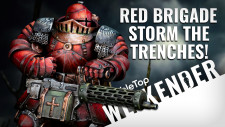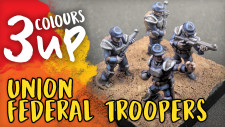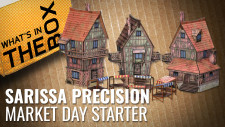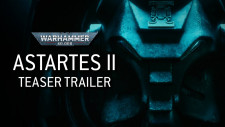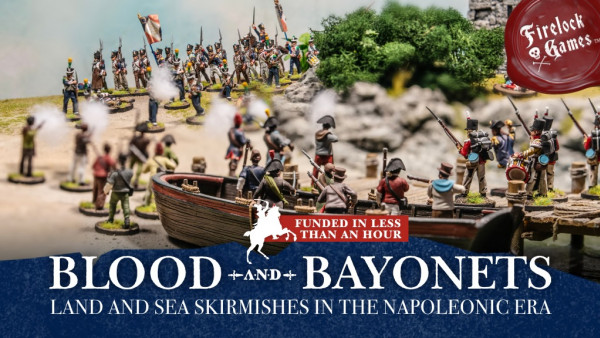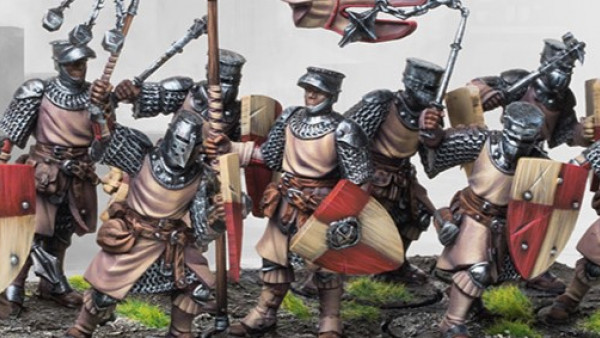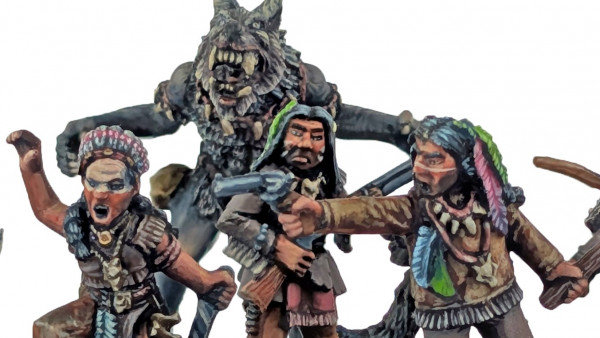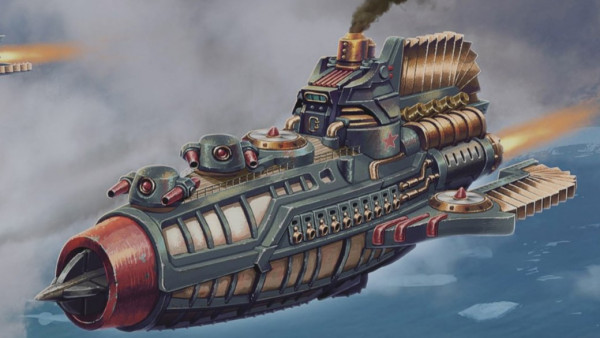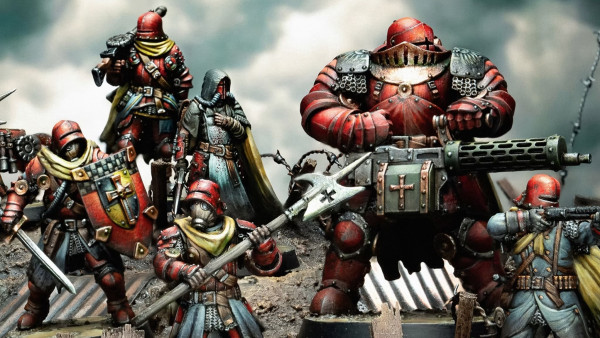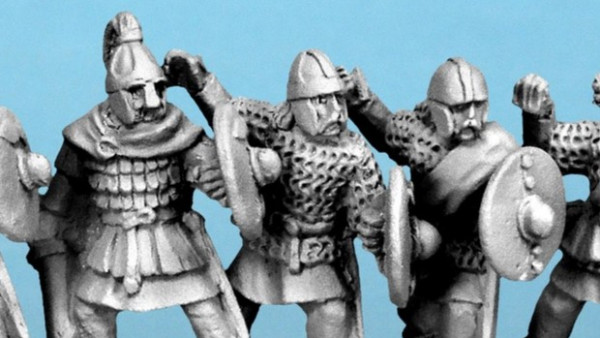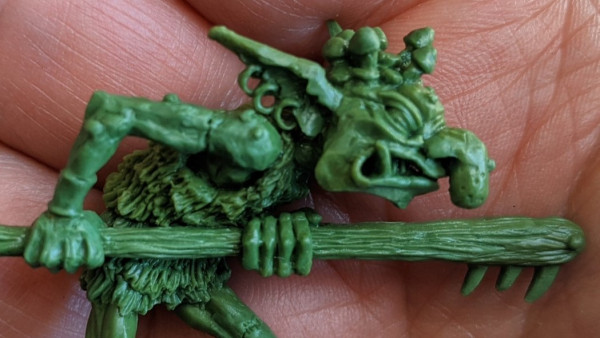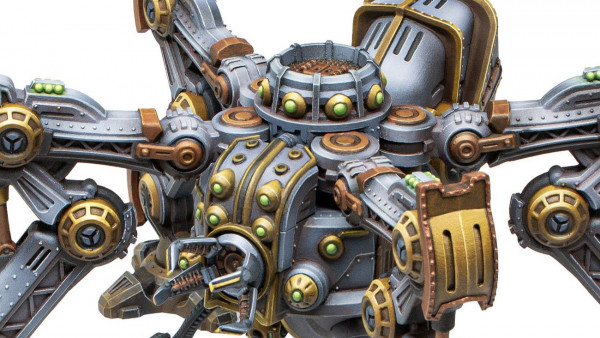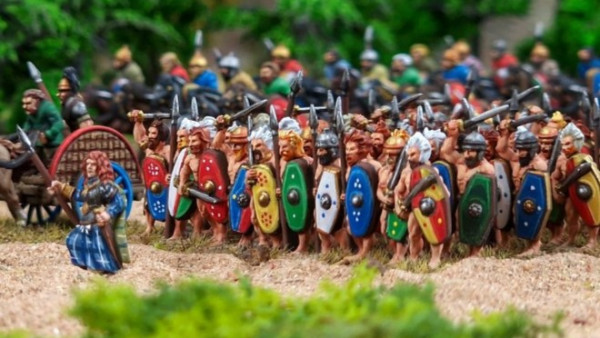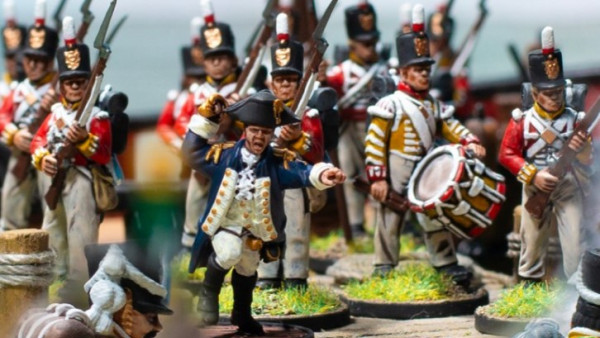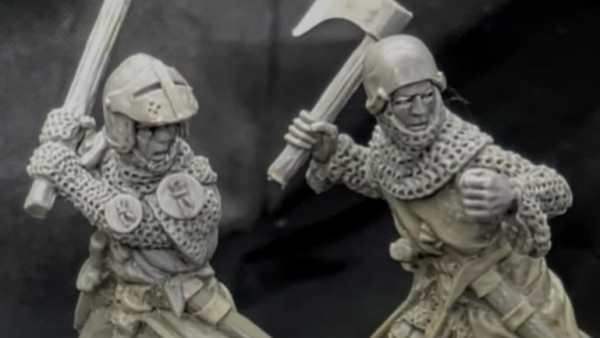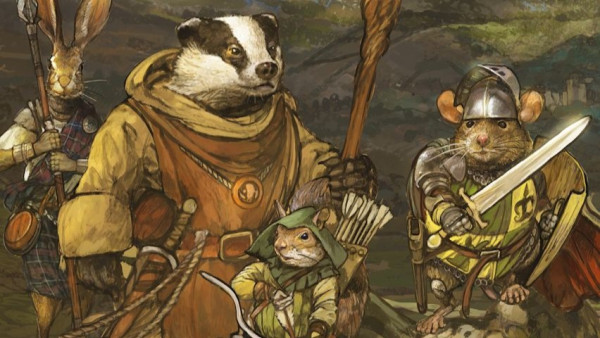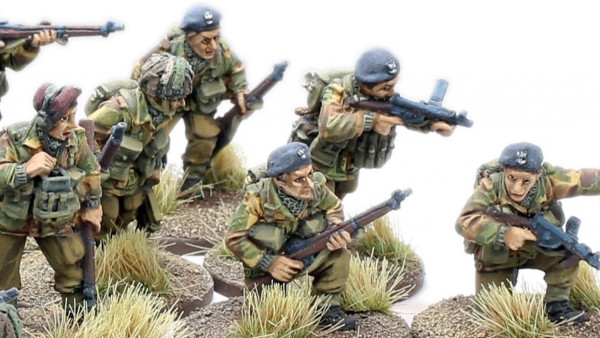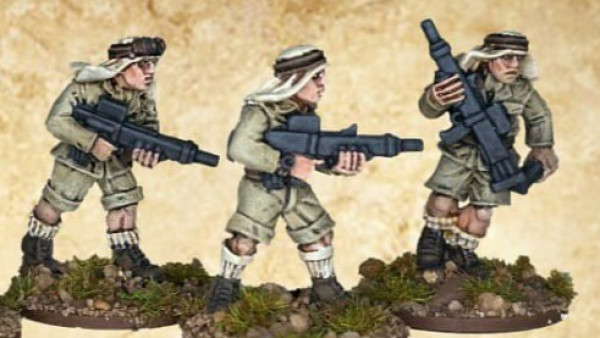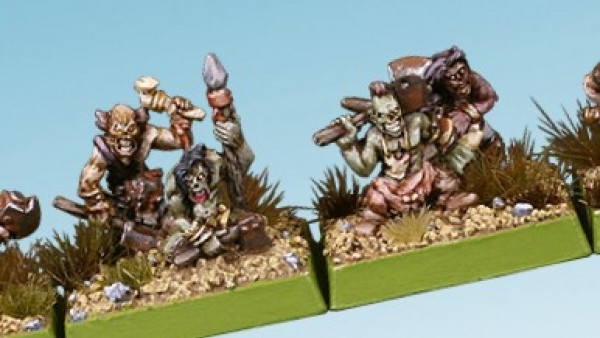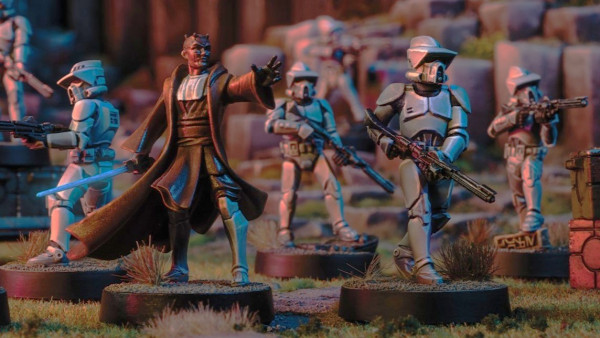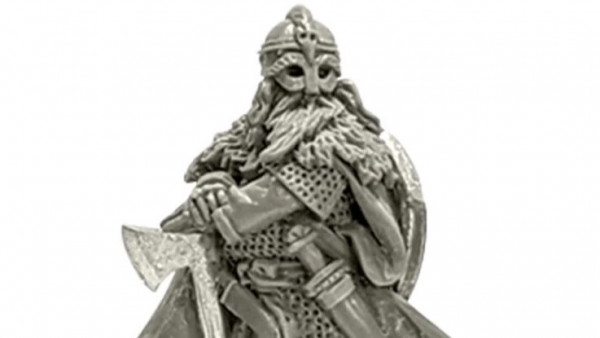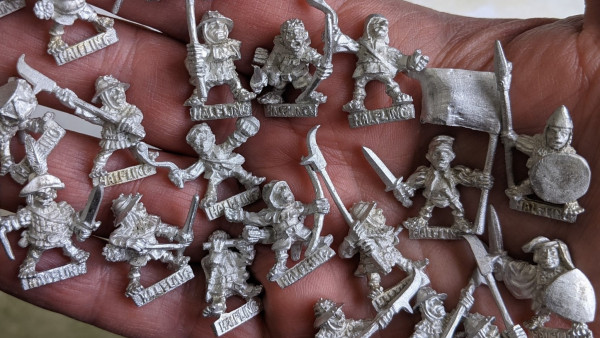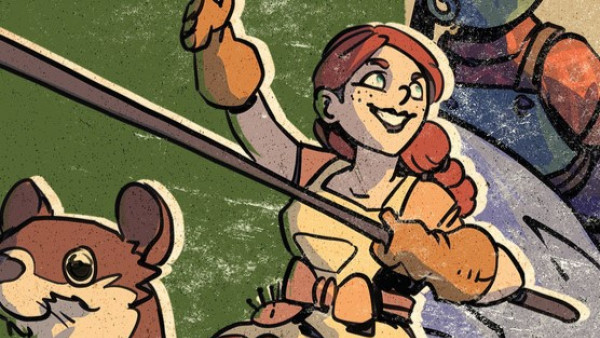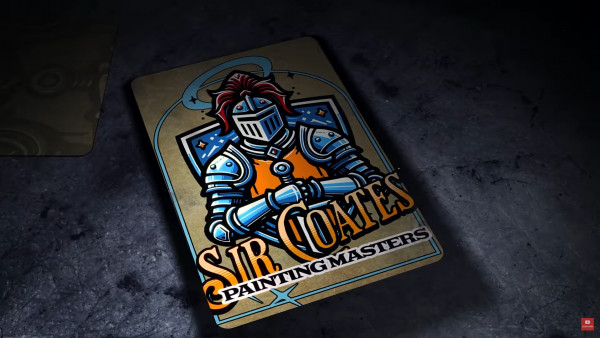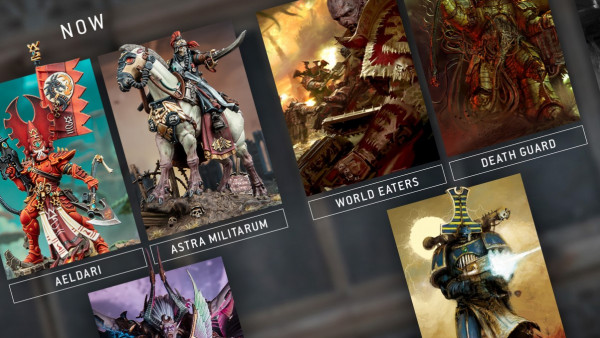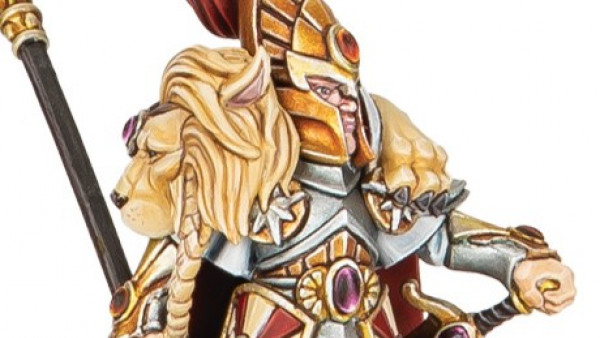Home › Forums › News, Rumours & General Discussion › Scale and Abstraction in Gaming
Tagged: Scale
This topic contains 13 replies, has 11 voices, and was last updated by ![]() torros 6 years, 2 months ago.
torros 6 years, 2 months ago.
-
AuthorPosts
-
November 17, 2018 at 6:38 am #1302950
Before I kick off I just want to flag in advance that this is just something I noted when running the numbers on game scales. I’m not trying to call out any particular gaming system for doing a bad job or spoil anybody’s fun. ALL games involve some degree of abstraction, and the numbers below should be viewed in relation to this. -IE, don’t let this ruin your fun!
So, prompted by a comment that @oriskany made (Sorry to drop you in this one Jim….) on a Hobby Weekender thread a few weeks ago about the accuracy of the Valor and Victory system and how miniature games tending to get a little fuzzy with scale once you moved beyond the black powder era I decided to actually have a look at the numbers and see what scales and ranges would look like if we were to completely ignore any form of gaming abstraction.
First note, I have assumed that the ‘average height’ of a combattant for the purposes of calculating scales to be 180cm, or around 5 foot 10 in. This may not be a realistic approximation for the time period, nutritional content or gravitational impacts available in your particular game setting. This almost immediately threw up some issues. I had always assumed that at 28mm, games were approximately 1/56 scale. If we were using a scale of 1/56 for ‘true scale’ 28mm, the average combattant would stand 157cm tall or 5 foot 2 in. Similarly, I had always assumed 20mm was 1/72, but if I was going to force the numbers into working at that scale then the average combattant would stand at 144cm, or approximately 4 foot 9 in. So I have proceeded with 180cm for the purposes of the below.
Additionally, I have ignored scales smaller than 2mm such as those used in naval combat or space fleet combat type games, as at that scale massive amounts of abstraction are required for the game to operate effectively (at 1/3000 scale a 20 mile range on a ship’s gun would be almost 11m on the gaming table – Or more correctly, on the gaming table across from the gaming table near the gaming table next to the gaming table where the vessel that fired the shell was…)
So, on to the numbers. The table below works like this – along the top are the game scales in both mm and an equivalent ‘ratio’ scale as a proportion of our 180cm tall soldier. The columns shaded in orange down the left hand side show the range on the tabletop of the weapons systems that the miniature is armed with. Lining the two columns up will show the real life equivalent range, in metres, of that weapon were we to miraculously upscale our tabletop to real world proportions.
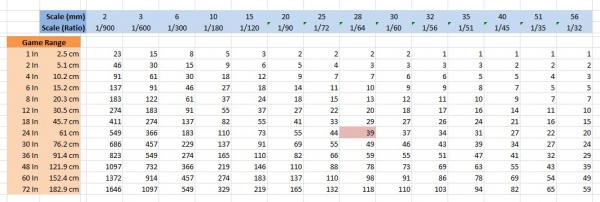
I have shaded one cell in red, it shows that a true scale 28mm miniature with a weapon with a 24 inch range would have an effective real life range of 39 metres. Now I have just begun delving into Sharp Practice. The game is designed for 28mm minis, with caveats that other scales can be used by reworking movement values and ranges. The effective range of a musket of the period was determined by testing at the time to be ‘about 100 yards’, with the British Brown Bess musket having a slightly longer effective range. 100 yards is about 91m, or more than double the 39m shown on the table. As Sharp Practice is a skirmish level game I can buy this, as the targets would be in comparatively loose formation and my perfectly flat gaming table does a poor job of representing the undulating fields of Europe. However, getting back to the original point, once weapons technology moves beyond the black powder era, the 39 metre range listed (34m if we are going to move up to ‘heroic 28mm at the 32mm column) starts to look a little less realistic.
So, should you as a miniature gamer be concerned? Probably not. I’m definitely not worried at any rate. While the 90 metre maximum range of a machine gun in 2nd edition Battletech always made me giggle a little, even all those years ago I understood that it was just abstraction that was required for the game mechanics to work fluidly. If you are suddenly concerned that your heavy weapon armed space marine only has an effective range of about 50-70m, keep in mind that line of sight is ordinarily the issue on the tabletop rather than weapon range – Space Hulk or Kill Team illustrate this brilliantly. The alternative is everyone swaps out for 6mm armies or we all start playing on basketball courts (and nobody has that much terrain…) 🙂
November 17, 2018 at 8:11 am #1302953Very interesting.
Most 28mm Games aren’t 28mm Games they’re 15mm Games that use bigger minis.
When most developers make a 28mm Game they start with a 15mm Ground Scale and use that to base their system.
Take the 100 yard Musket range then translate it to 15mm and you’ll see what I mean.
November 17, 2018 at 10:07 am #1302999Well, that was genuinely interesting.
Thank you.
November 17, 2018 at 1:26 pm #1303042Interesting thread.
iirc, 1st ed 40k (and presumable 3rd ed WHFB too) had rules for firing over a weapon’s max range; think it was something like you could shoot at something on the far side of the table, but needed 6s to hit regardless of BS, so the range of a weapon was more accurately it’s effective range rather than its absolute range.
November 17, 2018 at 2:22 pm #1303057Awesome topic, @evilstu ~ I normally don’t get involved in these kinds of threads but saw that you tagged me and then … included an Excel spreadsheet! Okay, now I am fully invested. 😀 😀 😀
Okay, some replies:
180 cm soldier:
I’ve always had a “problem” with this. My “native” miniature gaming scale is 15mm, which is usually equated as 1:100. Well, we know this is nonsense, because men are taller than 1.5 meters (approx 60 inches, or 5′ 0″).
The way I’ve always understood it, and I could be wrong here … is that the 1:100 scale is supposed to not measure the man’s height, but the height of his eyes.
The reason for this was that so many miniatures, especially old-school historical minis like Napoleonics, have elaborate headgear. So it’s never really easy ti precisely measure how tall a man really is (i.e., where is the top of his head).
This reconciles (at least for me) how 15mm minis are actually usually 17, 18, or even 18.5 mm tall, and brings us closer to a real 1:100 scale.
I’m assuming that this is the same general mechanic / logic that can be applied to 1:72/20mm, and 1:56/28mm. The men might seem a little small if you do a direct math conversion, but I think that’s because the 15, 20, or 28mm is measuring to the eyes which makes them half a head shorter (approximately 1/12 of their height).
Valor & Victory
This is a fun, accessible, and passably realistic game. But it doesn’t try to be a real “grognard’s grimoire” kind of thing (like GDW Assault, PanzerLeader, Advanced Squad Leader, etc). It isn’t the most tactically or historically realistic thing out there. That’s part of why I use it on the site, it’s a “bridge” between minis and the heavy-duty stuff I don’t usually talk about, at least not here on this site.
Pertinent to this conversation, on thing they do admittedly leave out is a hard-and-fast declaration of now wide a hex is supposed to be. We use 30m / 100ft as an approximation for our maps / units / scenarios, but that’s by no means official.
Maximum Range v. Effective Range
One thing to bear in mind, especially in unit-driven games rather than WYSIWYG skirmish games, is the difference between effective range and maximum range. The maximum range is how far a bullet can possibly travel, usually on a parabolic arc under ideal conditions. For example, a 5.56mm / .223 Remington bullet has a maximum range of about 3000+ meters.
That’s nuts, because the maximum effective range for that cartridge is usually listed at about 500m. That’s how far the average trained soldier can hit a man-sized target standing still at least half the time.
In a unit-driven game, the effective range would how far MOST men in a given unit can hit MOST targets under MOST conditions MOST of the time. This number would be even smaller (often 200m or less for today’s smaller-caliber assault rifle ammo loads).
As you can see, it all becomes about averages.
Too many wargame designers think Wikipedia or YouTube is “research,” they look up the max range on a given weapon, then apply that number into their scales, see it’s impossible, and so give up on the whole thing under the blanket term “abstraction” (I’m really starting to hate that word).
So don’t be TOO harsh on your game scales. You’re right, they’re still way off, but a little closer than we may think.
Things like the 90m range for an MG in BattleTech (as you mention) are just mystifying, though. That’s a hex and counter game. There is no reason for that short of a range. Mini games have to worry about scales and playability and tables the size of tennis courts or golf courses, but in a H&C game that’s just silly.
Why I hate the words “Abstraction and Immersion”
Just two more words that are tragically misunderstood (in my view) by the wargaming community at large.
I’m not saying its happening here on this thread, but in many threads “abstraction” is tossed around like it’s a bad word. “I don’t like hex & counter games because of the abstraction.”
Okay, two things these people don’t understand. What the word “abstraction” means, and how war actually works.
Take Infinity or Bolt Action. I have a high-tech weapon, I aim at a target, pull the trigger, and fire. Okay, first of all, you’re not doing on a 30, 40, of 100 foot table. So your ranges are totally wrong. So some game designers try to muddy the water with some nonsense about “logarithmic scale.” There’s your abstraction.
I wouldn’t mind some sort of scale differentials, like this 28mm figure on a 6’x4′ table = a FIRETEAM of four men or a SQUAD of 8-12 men, each inch is 20 feet or some such.
But all these games rely on true line of sight rules.
The tragic Achilles Heel of this design paradigm is that the miniature and the terrain have to be in scale with each other, so players can put their eye on the table and feel like they are “there” for the sake of “immersion.”
So sorry. So, so sorry that this is all so, so wrong. The only place that game is taking you is a fantasy world where people are 40 feet tall or firearms only shoot 30 feet. Anyone who actually knows about these things takes one look at this and in instantly taken OUT of the world. Immersion is ruined.
The whole idea of the “skirmish” wargame is, frankly, abstracted to hell and back.
Here’s a quick spoiler alert: Wars are not won by men. They are won by UNITS. War is a social art. Any game where each playing piece represents an individual, rather than a group of people dealing with a range of battlefield stresses and psychological cohesive factors (loyal camaraderie and mortal terror, and anything / everything in between) …
… is getting it wrong.
Wars are not won by shooting individual people with individual bullets. War is not a “medical” issue. War is a group of people imposing its will, through fear and terror (admittedly using collateral damage and injury as a delivery mechanism) to break the other group’s will to fight. And again, not on an individual basis. You have to inflict enough pain, terror, and confusion so that other group cannot work together effectively.
Not to get too philosophical here, but any game that really wants to address how combat works needs to figure this out. Some really do, like Battlegroup. Sure, you shoot at enemy squads and blow up tanks, but how you actually win is by exhausting your opponent BattleGroup Rating, his “morale,” his “cohesion, his “will.” That’s the whole army. The whole army might still be there, but can no longer function as a group.
Compare against skirmish games, where you eliminate individual units that are worth x y and z points, and score up to see who won.
This wouldn’t bother me, to each their own and all, except these are the people who often cry out that unit-based wargames are “too abstract.”
I’m sorry, what? Didn’t you just put a victory points value on your casualties (i.e., human life)? Immersion? I’m supposed to be … I’m sorry … immersed … in a battle simulation where the two commanders met before the fight to “point up their lists?”
Indoors and Modern Wargaming:
I agree 100% with what you said about “Space Hulk” (and I don’t even play GW games). More and more combat in the modern arena is taking place in heavily urban areas or even indoors – and here, of course, the ranges get murderously short. This allows us to play with 28mm minis (if that’s your thing) and still keep meaningful engagement ranges on any weapon in the “smokeless powder” era.
November 17, 2018 at 4:33 pm #1303147First off, the idea of a basketball court full of terrain makes my eyes glitter.
The abstraction of scale has always bothered me just a little. The first example I would have pointed to would also have been the BattleTech machine guns. However I as you have to buy the idea and a lot of factors could work their way into it. Loose formations, terrain, and the idea of these opponents moving around a lot. So that at a greater distance it would be less possible to hit something reliably. I have heard of scenarios where there was no maximum range, but only incremental range penalties, such as you may see in D&D in some earlier editions, or in Car Wars. Because of the calculations necessary to determine the penalties, these games took a bit more time per turn. I still remember fondly a few 4 way games of Car Wars; each turn took so long to accomplish that we were at about an hour per second.
Good article. Thanks for stirring up the awesome memories of those games of 35 years ago.
November 17, 2018 at 4:38 pm #1303159November 17, 2018 at 4:48 pm #1303160It’s kinda fun to make up the excuses, though. The real answer, after all, is that it’s a game. Way more fun to discuss random movement, an visual occlusion, rolling terrain, etc.
November 18, 2018 at 4:45 pm #1303492I’d be more than happy for games to use ‘true to scale’ effective and maximum ranges for weapons, and to combine that with terrain rules that fill up a table with line of sight blockers, etc.
November 18, 2018 at 6:12 pm #1303539Well Rick Priestly’s Gates of Antares rules have longer “standard” ranges than most 28mm sci-fi games (basically everything can hit anything on the table). This can cause issues, however it’s important to set up the table to limit the field of fire with lots of terrain (as Oriskany pointed out earlier about urban tables.
Another issue with adding realistic ranges is that you would hardly see anyone able to close to melee while under fire (I’m more talking about the black powder era here) than we are used to. So in this instance the ranges are definitely tweaked for “gaming purposes”.
I think we see the biggest abstraction with ranges and ground scale with skirmish gaming (which perversely is probably the most popular genre in gaming these days). Even using 15mm figures with 28mm scales/ranges they are still far to short (we’d probably get a realistic ground scale using 6mm with 28mm ranges). But the problem with smaller scale figures used with skirmish games is the fact things start to get too “fiddly” trying to move them around (and it’s very easy to just lose them on the games table), the 28mm scale miniatures have probably become more popular as a “gaming piece” (ie easy to move around a table) more than the “look” of them on the table.
When I started gaming WW2 was either 20mm for infantry skirmish (although this was due to the availability of plastic kits) and 6mm if you wanted to do armoured combat. These days it’s rare to see a 6mm game at a show. I still think that tank heavy games should be in 6mm (after all seeing a tank on a table in 28mm that can’t shoot to the other side of the table just looks wrong in my eyes). But another thing is the availability of things at shows these days (can’t remember the last time I saw anyone selling 6mm micro tanks at a show).
Strangely 6mm for black powder is used for even larger scale of abstraction than 15mm or 25mm in the black powder era. Most Corps level rulesets are designed for 6mm, yet using 6mm figures with 15mm to 25mm scales would look more “correct” (or even using them with a figure scale of 1:10 to give rise the REALLY big battalions). So it seems that gamers aren’t that concerned with the abstraction of ground scale, they are more concerned with the “look” of the minis and ease of use these days.
November 19, 2018 at 8:54 am #1303833Thanks all for the genuinely insightful feedback comments. Have been thinking it through and as a bit of a workaround solution for ‘true line of sight’ skirmish level games I think I might just apply a house rule where effective weapon ranges are doubled if a miniature did not move in the current round, or perhaps tripled if they did not move in the current or previous round and are carrying a weapon with an appropriately long/rifled barrel (ie perhaps not machine pistols or similar weapons).
My reasoning is that if you have a miniature rushing about the place for whatever arbitrary slice of time a game turn happens to be then the grouping of the shots they are discharging is likely to be spread over a wider, disparate area, resulting in a reduced chance to land a hit capable of incapacitating an enemy model. If the model/figure has not been moving and has instead had greater time to steady themselves and aim then the grouping of shots discharged should be much tighter, with the reduced spread effectively increasing the range between the shooter and target where an incapacitating hit is likely to land. Or at least that is how my current line of thought is rationalising it. This should effectively mean that steadied weapons would have a range of the entire game board with line of sight being the only restriction, whereas close support weapons (small arms, grenades etc) would be at somewhat of a disadvantage until a close assault occurred.
For massed unit or rank and file games where a miniature represents 10 or 20 troops I don’t think any sort of change is needed, especially as at that point all they are are markers that somewhere in that general vicinity there is a unit of approximately that size facing in a particular direction.
Thanks again everyone for your thoughts on this!
November 19, 2018 at 9:09 am #1303848You might want to look at Stargrunt 2 by GZG ( free download from their site) where ranges depend on the soldiers skill level. For example a rifle being used by a ”green’ soldier might have a short range of 6 inches while an ‘elite’ soldier using the same weapon the short range might be 10 inches. The range bands for the weapon woukd change depenfing on who was using it
So for a green trooper the range bands would be
Short 0 to 6
Medium 7-12
Long 13 to 18
While for the Elite it would be
Short 0 to 10
Medium 11 to 20
Long 21 to 30
November 22, 2018 at 9:01 pm #1305789I do think ‘scale’ is an issue if you look at it as ‘wargame is a simulation’.
So yeah, a machinegun that can’t hit beyond 90 meters in a universe featuring gigantic mechs is *eh* weird and definitely ‘unrealistic’.
However if you approach it as a mechanical puzzle (‘3D chess with pretty gaming pieces’) then the issue of scale becomes an issue of balance. Units move at speeds and have have the given ranges because it creates an interesting challenge. Not because it is ‘realistic’ or ‘immersive’.
Terrain itself provides a different parameter to solving the rock-paper-scissors-lizard-spock puzzle in front of you.I think this is why I’m not bothered by the scale/ranges in games …
Speaking of ‘scale’ and ‘range’. We’ve covered miniature sizes, speed/movment and ranges of weapons.
How realistic are squad coherency distance rules in games ?
I’m guessing even that isn’t anywhere near ‘realistic’ ?November 22, 2018 at 9:28 pm #1305800I think there has to be some fudging to get the game on the table. Even in Horse and musket this is difficult.. A 18th century infantry line was 50 times wider than it was deep
As Sam Mustafa writes in his game Might and Reason . Wargames armies tend to be more blockish and square to their historical counterparts. A Brigade (1 base) is in reality 4 battalions and using the same scale as is used for the weapons ranges this unit should be 10 inches wide and 1/16 of an inch deep.
In the end some distortion is necessary
-
AuthorPosts
You must be logged in to reply to this topic.





























